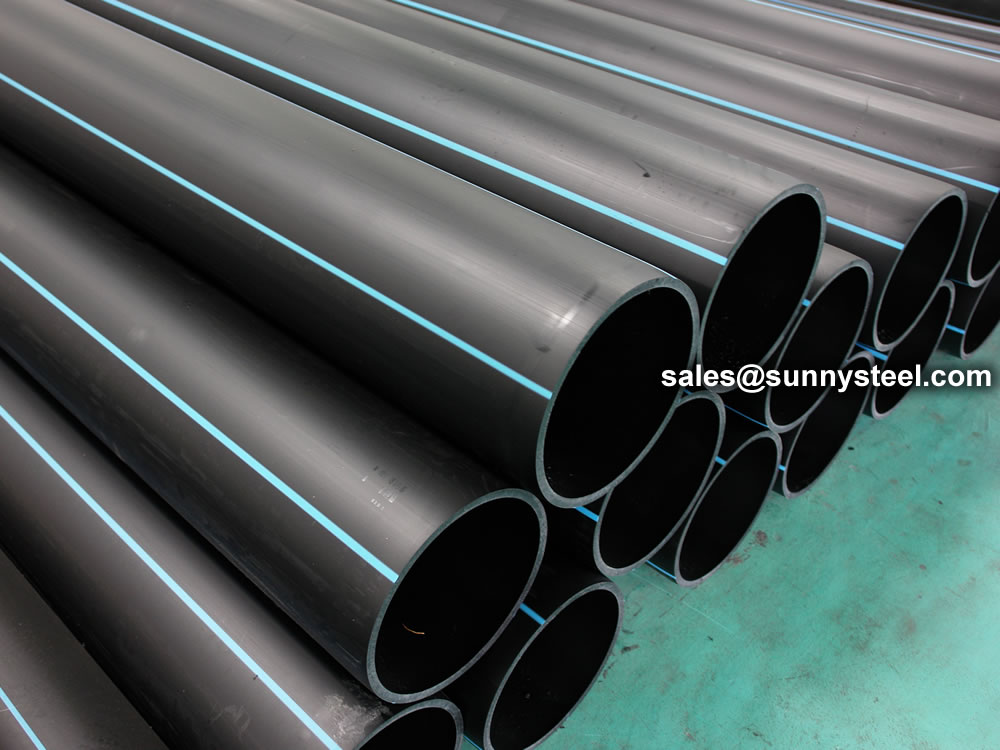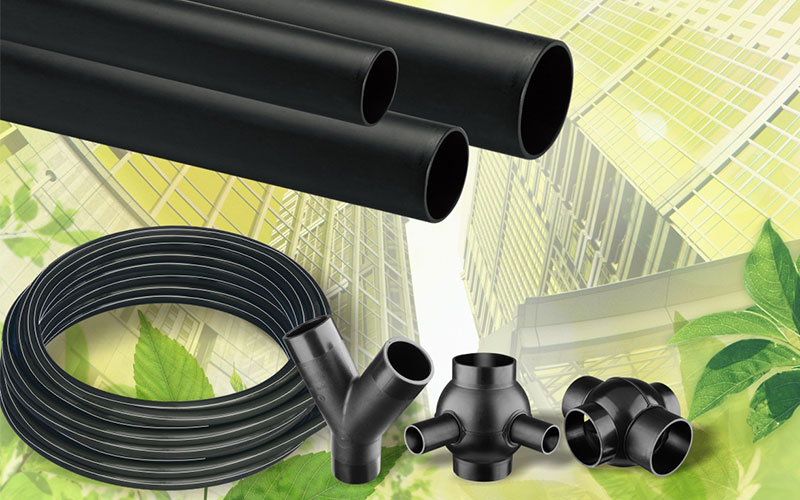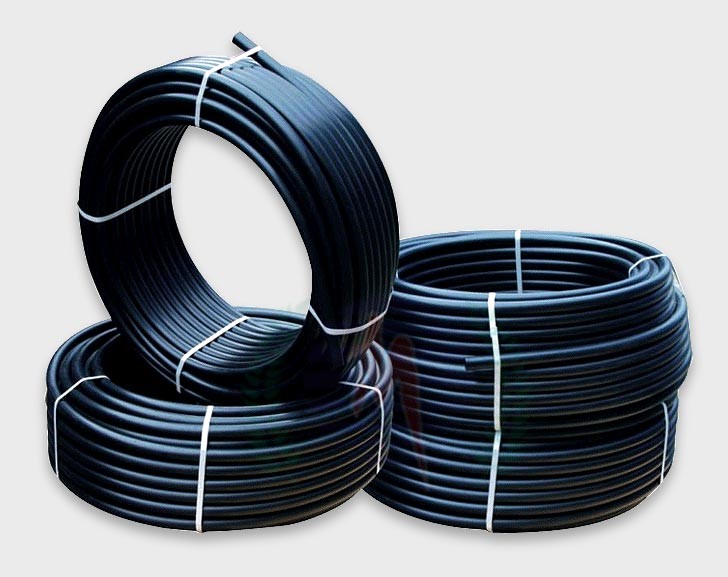Where to Source Midland TX HDPE Pipe Fittings in Stock for Oilfield Success
Explore the Production Process Behind High-Quality HDPE Pipe and Its Applications
The production process of high-quality HDPE pipes is detailed and methodical. It starts with the option of basic materials that improve performance. Following this, ethylene goes through polymerization to develop resin, which is after that shaped with extrusion. Quality control is critical, guaranteeing that the end product satisfies rigid requirements. The journey of HDPE pipelines does not finish with production. Their applications across various markets expose a wider importance worth analyzing.
Comprehending HDPE: Properties and Advantages

High-density polyethylene (HDPE) is a versatile polycarbonate understood for its toughness and resistance to different environmental elements. This material shows superb tensile strength, making it suitable for demanding applications. Its low-density structure adds to a lightweight item, promoting simplicity of dealing with and installation. HDPE additionally showcases exceptional resistance to chemicals, which reduces degradation when revealed to harsh substances.
The product's low moisture absorption additionally improves its longevity, making it suitable for use in pipelines and tank. In addition, HDPE is resistant to ultraviolet (UV) radiation, making sure that items preserve their stability also when revealed to sunshine. Furthermore, its adaptability permits the production of complex forms without endangering strength. The eco-friendly nature of HDPE, commonly acquired from recycled materials, contributes to its appeal, promoting lasting methods in production. Generally, these residential properties and benefits make HDPE a preferred selection for various commercial and customer applications.
Resources Option for HDPE Production
The option of resources for HDPE manufacturing is crucial to confirm the end product satisfies the preferred specifications and top quality standards. High-density polyethylene (HDPE) is largely created from polymerized ethylene, derived from fossil fuels such as gas or petroleum. The high quality of these feedstocks considerably influences the mechanical and thermal buildings of the final HDPE.
Additives additionally play a considerable function in boosting HDPE's efficiency, including anti-oxidants, UV stabilizers, and colorants, which enhance longevity and resistance to ecological variables. The selection process have to consider not just the chemical composition of the raw products however also their handling features to ensure efficient production.
The sourcing of raw products ought to focus on sustainability and compliance with ecological guidelines, as accountable methods are necessary in today's market. Ultimately, careful basic material selection lays the structure for producing top notch HDPE pipes suitable for varied applications.
The Extrusion Process: Forming HDPE Pipe
The extrusion procedure plays an essential function fit HDPE pipes, beginning with careful material prep work methods that guarantee excellent flow and consistency. Similarly vital is the design of the die, which directly influences the last measurements and surface high quality of the pipe. With each other, these factors add substantially to the performance and high quality of HDPE pipeline production.
Product Preparation Techniques
Efficient production of HDPE pipes starts with precise product prep work strategies, specifically the extrusion procedure. Throughout this stage, high-density polyethylene resin is very first dried out to remove moisture, ensuring suitable flow attributes. The material is after that fed right into the extruder, where it goes through heating and melting, transforming into a viscous state. This heating procedure is carefully controlled to maintain the material's honesty and performance. The molten HDPE is forced through a die, shaping it into a continuous pipeline kind. Proper temperature level administration throughout extrusion is necessary, as it directly affects the product's properties and the end product quality. As soon as formed, the HDPE pipe is cooled down and cut to specified sizes, all set for subsequent handling and applications.
Die Layout Relevance
Accuracy in die style plays a vital function in the extrusion process of HDPE pipelines. The die functions as the final shaping device, straight affecting the pipe's measurements, wall thickness, and surface area finish. A well-designed die assurances click here consistent product circulation, decreasing flaws such as irregularities and weak points. The geometry of the die must be maximized to accommodate the specific buildings of HDPE, including its thickness and thermal actions throughout extrusion. In addition, the cooling price of the product as it goes through the die can noticeably impact the pipeline's structural stability. Consequently, purchasing advanced die technology is crucial for manufacturers intending to produce high-grade HDPE pipes that fulfill industry requirements and consumer expectations.
Quality Assurance Measures in HDPE Manufacturing
Although numerous variables affect the quality of HDPE pipe manufacturing, efficient quality control actions are critical to guarantee consistency and dependability in the end product. Trick quality control techniques consist of rigorous material assessment, verifying that the raw polyethylene satisfies well established requirements for purity and thickness. Throughout the extrusion process, specifications such as temperature level, stress, and cooling time are carefully kept an eye on to maintain dimensional precision and architectural integrity
Furthermore, post-production screening is crucial; suppliers commonly carry out hydrostatic tests to analyze the pipeline's stamina and resistance to pressure. Aesthetic assessments for surface defects further boost top quality guarantee. Qualification from pertinent requirements organizations, like ASTM or ISO, supplies an additional layer of trustworthiness. By executing these extensive quality assurance actions, producers can minimize issues, improve efficiency, and guarantee that the HDPE pipelines satisfy the specific needs of different applications, ultimately bring about customer complete satisfaction and count on the product.
Applications of HDPE Pipe Throughout Industries
HDPE pipes are utilized across various sectors because of their longevity and flexibility. In water circulation systems, they guarantee effective delivery, while in wastewater administration, they provide trusted services for waste transportation. Additionally, farming irrigation networks benefit from HDPE's resistance to rust and adaptability, making it an ideal choice for contemporary farming methods.

Water Distribution Equipments
A significant variety of industries depend on high-density polyethylene (HDPE) pipelines for efficient water distribution systems. Understood for their durability and resistance to rust, HDPE pipelines are extensively made use of in municipal water networks, agricultural irrigation, and commercial applications. Their light-weight nature facilitates very easy handling and installment, decreasing labor prices and time. Additionally, HDPE pipes can suit various pressure degrees, making them ideal for both reduced and high-pressure systems. American Plastics HDPE Pipe for Oilfield. The flexibility of the product permits for seamless integration right into existing framework, minimizing the requirement for comprehensive excavation. HDPE's resistance to chemical seeping guarantees that the water provided remains secure and clean, making it a perfect choice for preserving the quality of drinkable water throughout numerous sectors.
Wastewater Administration Solutions
Reliable water distribution systems likewise lead the means for cutting-edge wastewater monitoring options, where high-density polyethylene (HDPE) pipelines play a considerable duty. Popular for their toughness and resistance to deterioration, HDPE pipes are optimal for moving wastewater in various settings. Their flexibility enables simple setup in complicated atmospheres, lessening the requirement for extensive excavation. Additionally, HDPE's smooth interior surface reduces friction, enhancing flow prices and performance. These pipelines are additionally immune to chemical leaching, making sure that pollutants do not jeopardize the surrounding atmosphere. Industries, towns, and treatment facilities significantly count on HDPE pipelines for their dependability and durability, making them a preferred choice for modern wastewater management systems. This adaptability highlights the important relevance of HDPE pipelines throughout numerous applications.
Agricultural Watering Networks
Agricultural watering networks profit considerably from the usage of high-density polyethylene (HDPE) pipelines, which give reliable and trusted water delivery to crops. HDPE pipes are lightweight, making them simple to move and install, while their flexibility enables numerous setups in diverse terrains. These pipelines show exceptional resistance to rust, chemicals, and UV radiation, ensuring durability in rough agricultural settings. Furthermore, their smooth indoor surface minimizes rubbing loss, maximizing water flow and decreasing energy prices connected with pumping. The long life of HDPE pipelines, often surpassing 50 years, adds to reduce maintenance and substitute expenses. Farmers progressively count on HDPE pipes to enhance irrigation effectiveness and advertise lasting farming techniques, ultimately leading to enhanced crop yields and resource preservation.

Future Patterns in HDPE Pipeline Innovation
As the need for sustainable and effective framework grows, innovations in HDPE pipe technology are poised to change numerous industries. Emerging patterns consist of the assimilation of smart innovations, such as sensing units and IoT capacities, which assist in real-time surveillance of pipeline problems, decreasing upkeep prices and avoiding leaks. Furthermore, the advancement of advanced manufacturing techniques, such as 3D printing, is making it possible for the production of complex, tailored pipe designs that provide to particular job requirements.
Furthermore, the emphasis on recycling and circular economic climate methods is driving the innovation of HDPE pipes made from recycled materials, improving sustainability. Improved jointing approaches, such as electro-fusion and mechanical installations, are also enhancing installation performance and reliability. Lastly, the growing emphasis on ecological regulations is pressing suppliers to take on greener production procedures, ensuring that HDPE pipelines not only meet industry criteria yet likewise cultivate a more lasting future for facilities advancement.
Regularly Asked Questions
How Does HDPE Compare to Other Plastic Products?
HDPE outperforms many various other plastic products pertaining to resilience, chemical resistance, and adaptability. Its reduced density and high tensile strength make it suitable for different applications, commonly exceeding alternatives in both efficiency and durability.
What Are the Ecological Influences of HDPE Manufacturing?
The environmental influences of HDPE manufacturing include greenhouse gas discharges, energy consumption, and prospective contamination from manufacturing processes. Additionally, inappropriate disposal can result in dirt and water contamination, raising concerns about long-lasting ecological effects.
Can HDPE Water Lines Be Recycled?
Yes, HDPE pipelines can be recycled. Lots of centers accept made use of HDPE for handling, changing it right into new products. This reusing adds to sustainability efforts, reducing plastic waste while preserving sources and energy in the production cycle.
What Is the Life Expectancy of HDPE Pipeline?

How Do Temperature Level Variants Influence HDPE Pipeline Performance?
Temperature variants greatly affect HDPE pipeline efficiency, impacting flexibility and stamina. Heats can cause softening, while low temperatures may trigger brittleness, eventually influencing the pipe's resilience and suitability for numerous applications in varied settings.